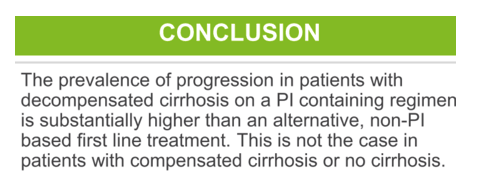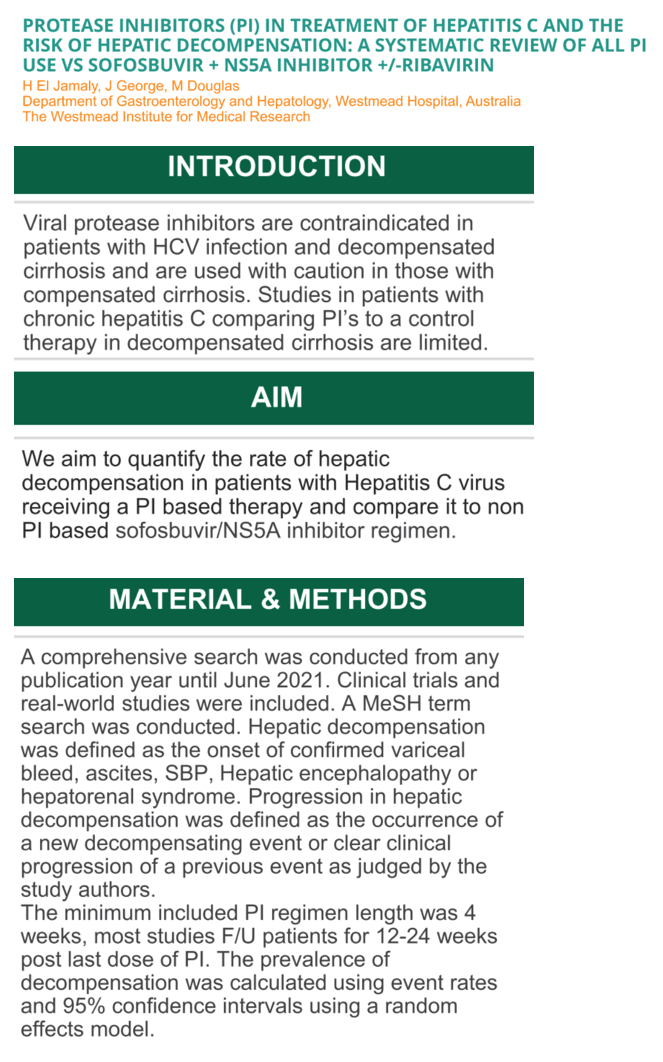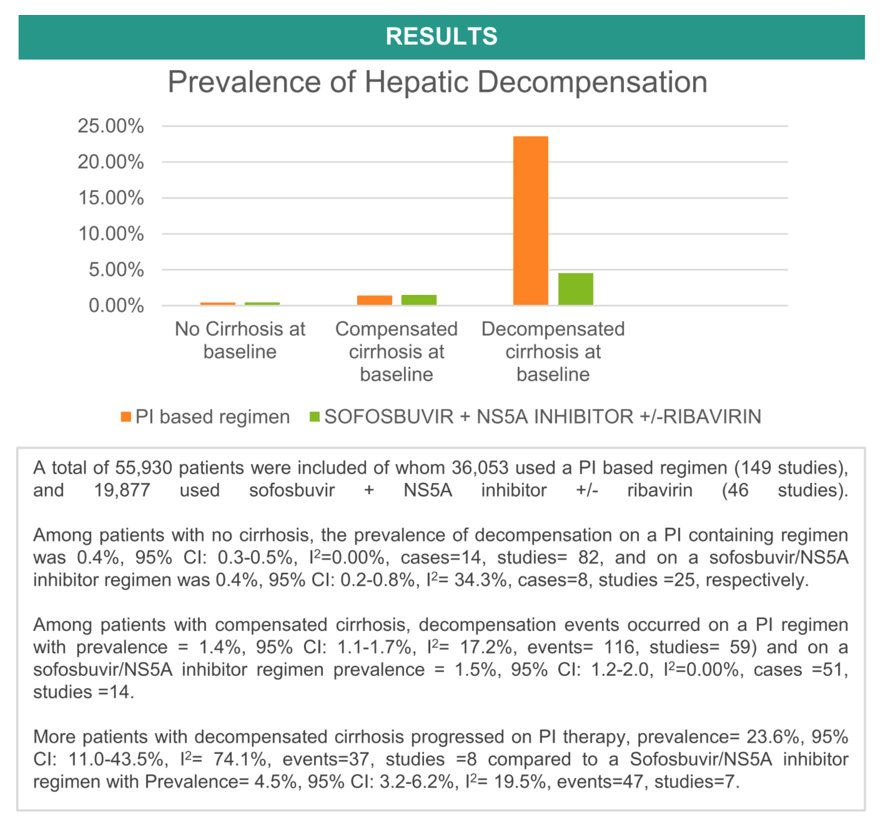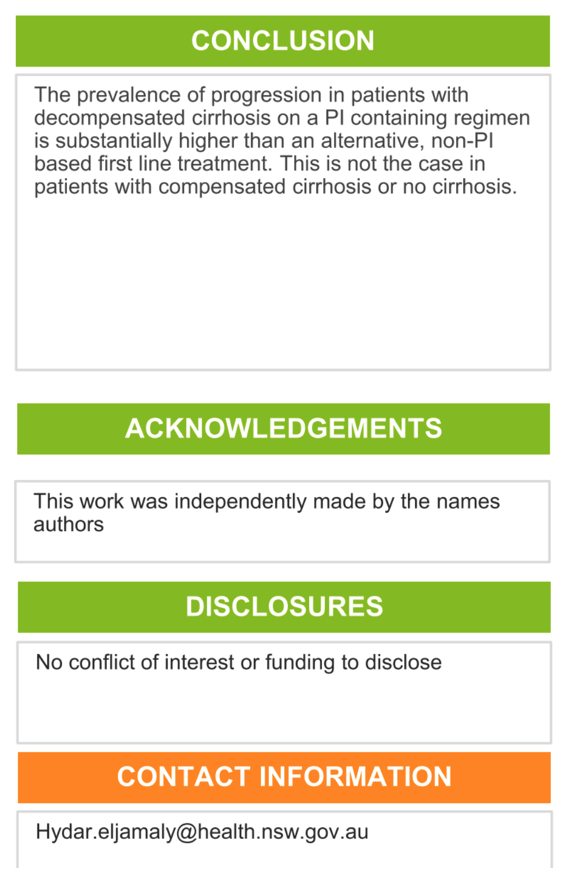 |
 |
 |
| |
PROTEASE INHIBITORS (PI) IN TREATMENT OF HEPATITIS C AND THE RISK OF HEPATIC DECOMPENSATION: A SYSTEMATIC REVIEW OF ALL PI USE VS SOFOSBUVIR + NS5A INHIBITOR +/-RIBAVIRIN
|
| |
| |

AASLD 2021 Nov 12-15
Hydar El Jamaly, Department of Gastroenterology and Hepatology, Westmead Hospital, Jacob George, Storr Liver Centre, Westmead Institute for Medical Research, University of Sydney and Westmead Hospital and Mark Douglas, The Westmead Institute for Medical Research
Background: Viral protease inhibitors are contraindicated in patients with HCV infection and decompensated cirrhosis and are used with caution in those with compensated cirrhosis. Studies in patients with chronic hepatitis C comparing PI's to a control therapy in decompensated cirrhosis are limited.
Methods: A comprehensive search was conducted from any publication year until June 2021. Clinical trials and real-world studies were included. A MeSH term search was conducted for protease inhibitors by category and keyword search of all individual generic names using Medline, Embase and Cochrane Library. Hepatic decompensation was defined as the onset of confirmed variceal bleed, ascites, SBP, Hepatic encephalopathy or hepatorenal syndrome. Progression in hepatic decompensation was defined as the occurrence of a new decompensating event or clear clinical progression of a previous event as judged by the study authors. The prevalence of hepatic decompensation was calculated using event rates and 95% confidence intervals using a random effects model.
Results: A total of 55,930 patients were included of whom 36,053 used a PI based regimen (149 studies), and 19,877 used sofosbuvir + NS5A inhibitor +/- ribavirin (46 studies). Among patients with no cirrhosis, the prevalence of decompensation on a PI containing regimen was 0.4%, 95% CI: 0.3-0.5%, I2=0.00%, cases=14, studies= 82, and on a sofosbuvir/NS5A inhibitor regimen was 0.4%, 95% CI: 0.2-0.8%, I2= 34.3%, cases=8, studies =25, respectively. Among patients with compensated cirrhosis, decompensation events occurred on a PI regimen with prevalence = 1.4%, 95% CI: 1.1-1.7%, I2= 17.2%, events= 116, studies= 59) and on a sofosbuvir/NS5A inhibitor regimen prevalence = 1.5%, 95% CI: 1.2-2.0, I2=0.00%, cases =51, studies =14. More patients with decompensated cirrhosis progressed on PI therapy, prevalence= 23.6%, 95% CI: 11.0-43.5%, I2= 74.1%, events=37, studies =8 compared to a Sofosbuvir/NS5A inhibitor regimen with Prevalence= 4.5%, 95% CI: 3.2-6.2%, I2= 19.5%, events=47, studies=7.
Conclusion: The prevalence of progression in patients with decompensated cirrhosis on a PI containing regimen is substantially higher than an alternative, non-PI based first line treatment. This is not the case in patients with compensated cirrhosis or no cirrhosis.



|
| |
|
 |
 |
|
|